Discover 35 hidden attractions, cool sights, and unusual things to do in Tel Aviv (Israel). Don't miss out on these must-see attractions: Dizengoff Street, Dizengoff Center, and Ramat Gan Safari. Also, be sure to include Rothschild Boulevard in your itinerary.
Below, you can find the list of the most amazing places you should visit in Tel Aviv (Tel Aviv).
Table of Contents
Dizengoff Street

Also known as: רחוב דיזנגוף
Street in Tel Aviv, Israel. Dizengoff Street is a major street in central Tel Aviv, named after Tel Aviv's first mayor, Meir Dizengoff.
The street runs from the corner of Ibn Gabirol Street in its southernmost point to the port area of Tel Aviv in its northwestern point. Dizengoff Street is one of the most important streets in Tel Aviv, and has played an essential role in the development of the city. Since the 1970s, Dizengoff Street has suffered urban decay.[1]
Address: Dizengoff St, Tel Aviv
Dizengoff Center
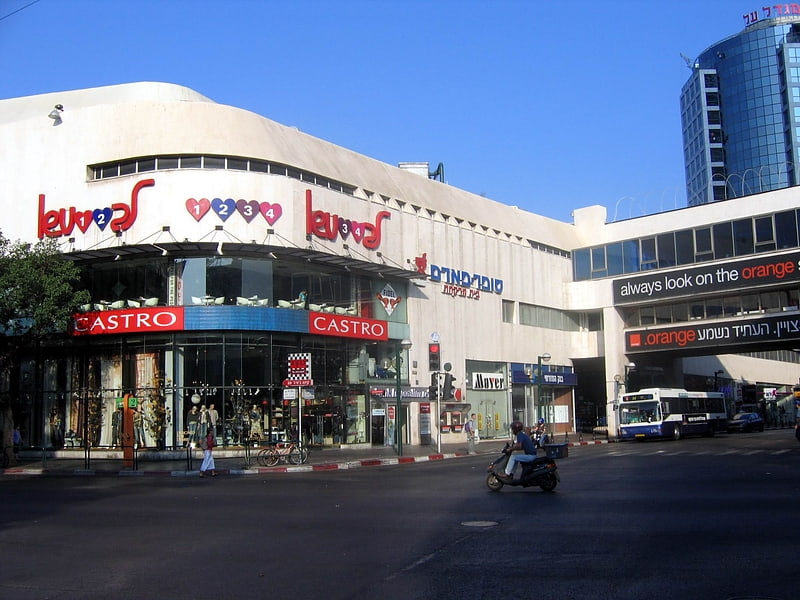
Also known as: דיזנגוף סנטר
Shopping mall in Tel Aviv, Israel. Dizengoff Center is a shopping mall at the intersection of Dizengoff Street and King George Street in Tel Aviv, Israel. The mall is named for Meir Dizengoff, the first mayor of Tel Aviv.[2]
Address: 50 Dizengoff St., 6433222 תל אביב-יפו
Ramat Gan Safari
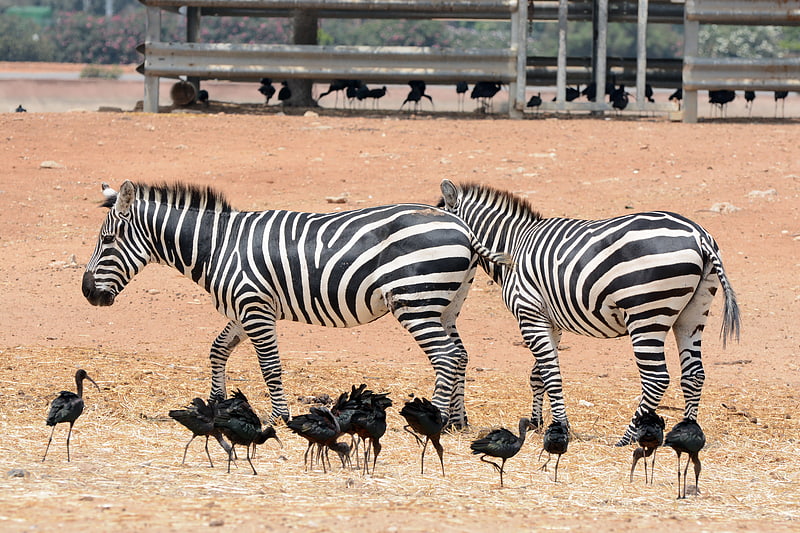
Also known as: הספארי ברמת גן
Zoo known for its drive-thru animal park. The Zoological Center Tel Aviv-Ramat Gan in the Tel Aviv District city of Ramat Gan, Israel is the largest collection of wildlife in human care in the Middle East. The 250-acre site consists of both a drive-through African safari area and a modern outdoor zoo. The African animal park opened to the general public in 1974. In 1981, the zoo was established in the middle of the park to replace the Tel Aviv Zoo, which had closed down.
Ramat Gan Safari houses 83 species of mammals, 92 species of birds and 23 species of reptiles. Among other outstanding groups of animals, it has white rhinos, hippos, lions, African and Asian elephants, gorillas, orangutans, and a Komodo dragon. The animals are seen in open air enclosures amid subtropical gardens.
The Ramat Gan Safari has sent animals to the Qalqilya Zoo in the West Bank of the Palestinian territories and maintains close ties with the veterinarians in the Palestinian Authority.
It has more than 700,000 visitors annually from all social and ethnic groups of Israel as well as tourists from abroad.[3]
Address: Hatsfi Avenue, Tel Aviv
Rothschild Boulevard
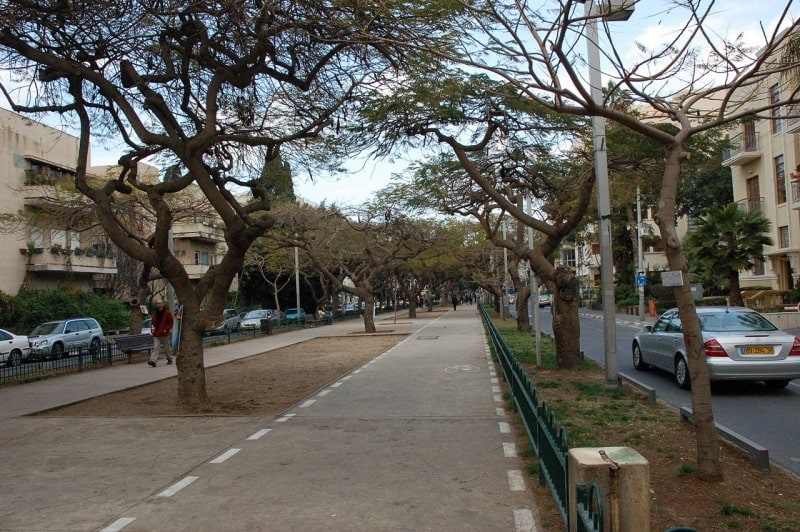
Also known as: שדרות רוטשילד
Street in Tel Aviv, Israel. Rothschild Boulevard is one of the principal streets in the center of Tel Aviv, Israel, beginning in Neve Tzedek at its southwestern edge and running north to Habima Theatre. It is one of the most expensive streets in the city, being one of the city's main tourist attractions. It features a wide, tree-lined central strip with pedestrian and bike lanes.[4]
Address: Yehuda ha-Levi St 48, 6578202 Tel Aviv-Yafo
Etzel House
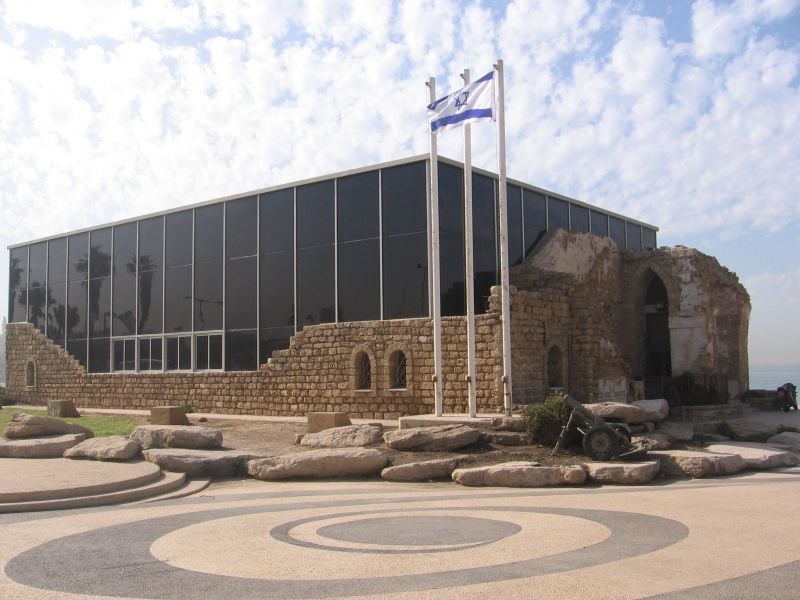
Museum in Tel Aviv, Israel. The Etzel House, commonly known as Beit Gidi, is a museum located in Tel Aviv, Israel dedicated to the Zionist paramilitary organization Irgun, also known by its acronym Etzel. Beit Gidi is one of the two buildings belonging to the Etzel Museum of Tel Aviv and it is placed next to the sea shore.
The museum is named in honor of leading Irgun officer Amichai Paglin, codename "Gidi", and dedicated to the memory of the 41 Irgun fighters who died in the battle for Jaffa in 1948.
The other, main building of the Etzel Museum stands on King George Street and tells the story of the formation of Etzel, while Etzel House, or Beit Gidi, is illustrating the organisation's underground activities. The original stone house was built in 1900, toward the end of the Ottoman period, by a Jew. It is one of the very few leftovers from the predominantly Arab district of Manshiya (Arabic name), sometimes mentioned in Israel as Menashiya, that was in part destroyed during the 1948 battles. The ruins of the house are now built over by a glass structure, the resulting building being surrounded on three sides by the Charles Clore Park, with its fourth side facing the seafront.[5]
Address: נחום גולדמן 2, Tel Aviv
Saint Nicholas Monastery

Also known as: מנזר ניקולאס הקדוש
Monastery in Israel. Saint Nicholas Monastery is an Armenian monastery built in the first millennium AD. Located in Old Jaffa, Tel Aviv, Israel, near the harbour and facing the Mediterranean, the monastery consists of a large multi-story complex that includes an Armenian church and living quarters. The monastery is under the jurisdiction of the Armenian Patriarchate of Jerusalem who rents out parts of the complex for residential and commercial purposes.
The monastery is the setting of the Bonaparte Visiting the Plague Victims of Jaffa painting by Antoine-Jean Gros depicting Napoleon visiting his sick soldiers in the monastery's courtyard.[6]
Tel Aviv Port
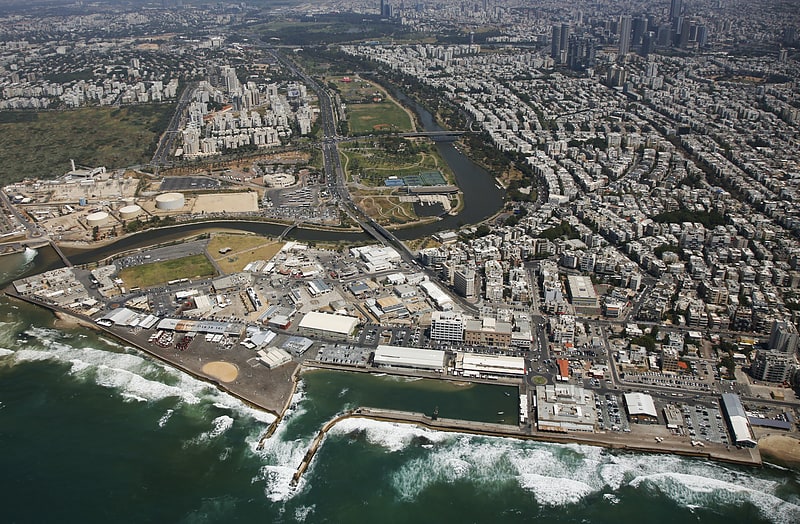
Also known as: נמל תל אביב
Bus stop in Tel Aviv, Israel. Tel Aviv Port is a commercial and entertainment district in northwest Tel Aviv, Israel along the Mediterranean Sea.[7]
Address: Nemal Tel Aviv, Tel Aviv
Tel Aviv Museum of Art
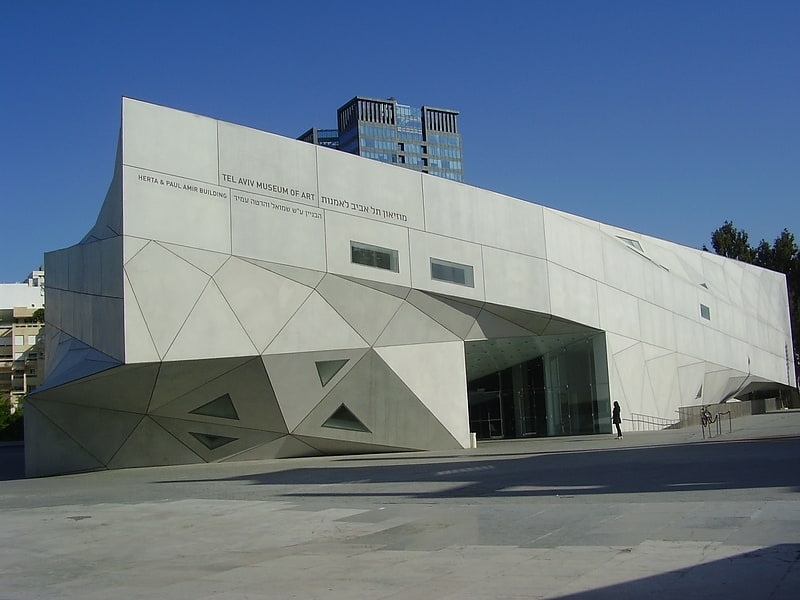
Also known as: מוזיאון תל אביב לאמנות
Museum of modern and contemporary art. Tel Aviv Museum of Art is an art museum in Tel Aviv, Israel. The museum is dedicated to the preservation and display of modern and contemporary art from Israel and around the world.[8]
Address: 27 Shaul Hamelech Blvd., 64239 תל אביב-יפו
ANU - Museum of the Jewish People
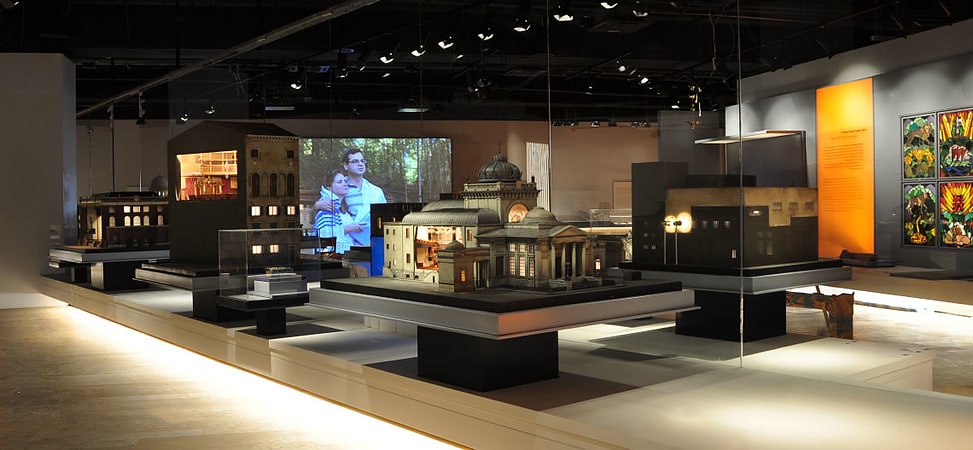
Also known as: מוזיאון העם היהודי - בית התפוצות
Jewish history and culture museum. ANU - Museum of the Jewish People, formerly the Nahum Goldmann Museum of the Jewish Diaspora, is located in Tel Aviv, Israel, at the center of the Tel Aviv University campus in Ramat Aviv.
ANU - Museum of the Jewish People is a global institution that tells the ongoing story of the Jewish people, intended for people of all faiths. Re-opened to the public on March 10, 2021, it is the world’s only museum dedicated to celebrating and exploring the experiences, accomplishments and spirit of the Jewish people from biblical times to the present. Through its educational programming, the institution works to connect Jewish people to their roots and strengthen their personal and collective Jewish identity. The museum presents a pluralistic narrative of Jewish culture, faith, purpose and deed as seen through the lens of Jewish history and current experience today.
The $100 million expanded museum, which replaces Beit Hatfutsot – The Museum of the Jewish People (Hebrew: בית התפוצות, "The Diaspora House" or "Beit Hatfutsot"), was designed and built over the past 10 years. It was funded by both the State of Israel, the Nadav Foundation and private philanthropy. As a first step in the renewal process, the museum added a new wing in 2016 with rotating temporary exhibitions, the Alfred H. Moses and Family Synagogue Hall featuring synagogue scale models, and Heroes - Trailblazers of the Jewish People, a children's interactive exhibition.
The museum's new name and "its new brand identity adds “ANU” — Hebrew for “we”— to embrace inclusion and reflect the diversity and collective spirit of the Jewish people everywhere" said Museum Board Chair Irina Nevzlin. “It is a privilege to realize the transformation of this institution, which now becomes the largest and most comprehensive Jewish museum in the world. The museum will serve as a beacon of Jewish identity and culture, celebrating our unique history and future.”[9]
Address: Rehov Klausner 15, Matiyahu Gate #2, 6139202 Tel Aviv
Tel Aviv Cinematheque
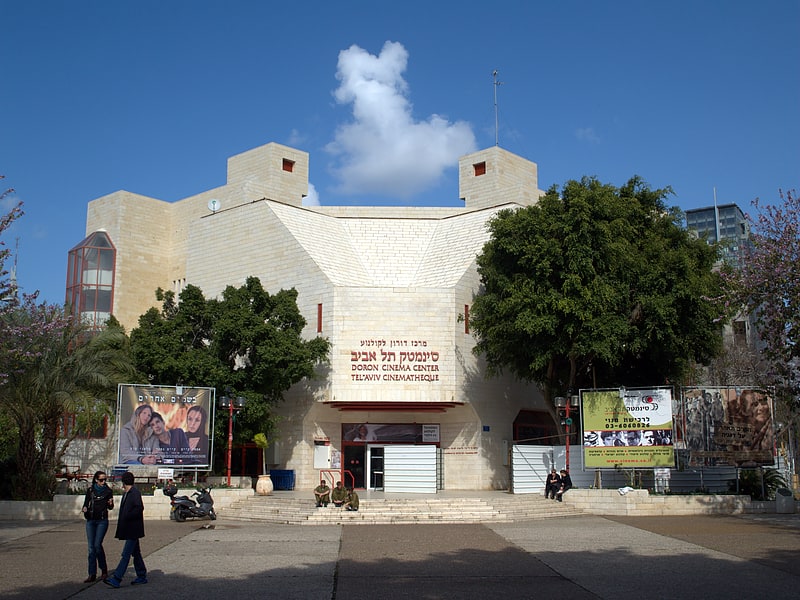
Also known as: סינמטק תל אביב
Movie theater in Tel Aviv, Israel. Tel Aviv Cinematheque is a cinematheque and movie archive, opened in Tel Aviv on 12 May 1973.
The Cinematheque, located at HaArba'a Street 2, has five screening halls. The Cinematheque programming includes Israeli and foreign films and offers private business screenings to help support the enterprise. Sometimes screenings are held for new Israeli films.
Film festivals held at the cinematheque include TLVFest, "Doc Aviv" Documentary Film Festival, "Moments of French Cinema", an Australian Film Festival and more. The festivals are supported by groups such as the Tel Aviv Museum of Art.
The cinematheque lobby hosts photo exhibitions by Israeli artists. It also publishes a film journal called "Cinematheque".
The current building was designed by Israeli Architect Salo Hershman, and was opened in 1989.[10]
Address: 2 Sprinzak St, 61203 תל אביב-יפו
Carmel Market
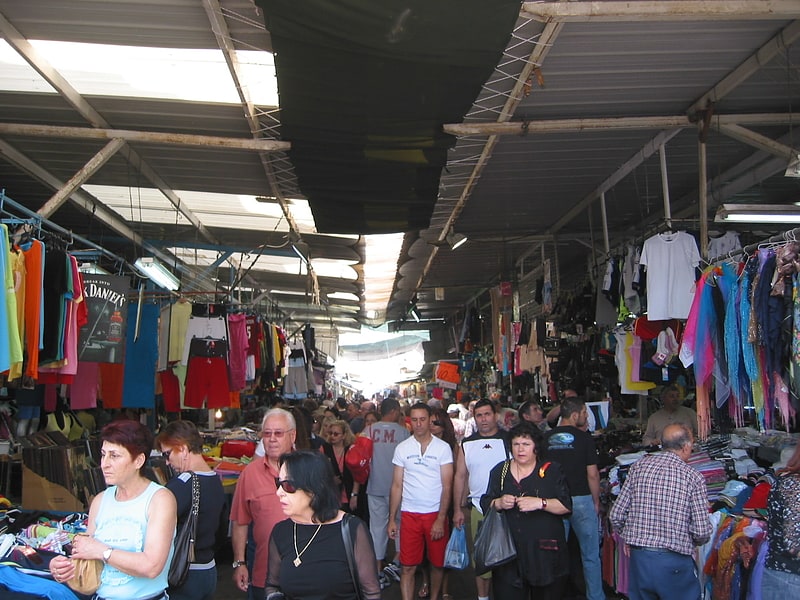
Also known as: שוק הכרמל
Outdoor market with local foods and goods. Carmel Market is a marketplace in Tel Aviv, Israel.[11]
Address: Allenby, King George and Sheinkin streets, Tel Aviv
Eretz Israel Museum

Also known as: מוזיאון ארץ ישראל
Major museum of Israeli history/culture. The Eretz Israel Museum is a historical and archeological museum in the Ramat Aviv neighborhood of Tel Aviv, Israel.
Eretz Israel Museum, established in 1953, has a large display of archaeological, anthropological and historical artifacts organized in a series of exhibition pavilions on its grounds. Each pavilion is dedicated to a different subject: glassware, ceramics, coins, copper and more. The museum also has a planetarium.
The "Man and His Work" wing features live demonstrations of ancient methods of weaving, jewelry and pottery making, grain grinding and bread baking. Tel Qasile, an excavation in which 12 distinct layers of culture have been uncovered, is on the grounds of the museum.[12]
Address: 2 Haim Levanon St., 69975 תל אביב-יפו
St. Peter's Church

Also known as: כנסיית פטרוס הקדוש
Spanish Baroque style Catholic church. St. Peter's Church is a Franciscan church in the historical part of Jaffa, now part of Tel Aviv, Israel.[13]
Address: 1 Mifratz Shlomo Street, Tel Aviv
Independence Hall
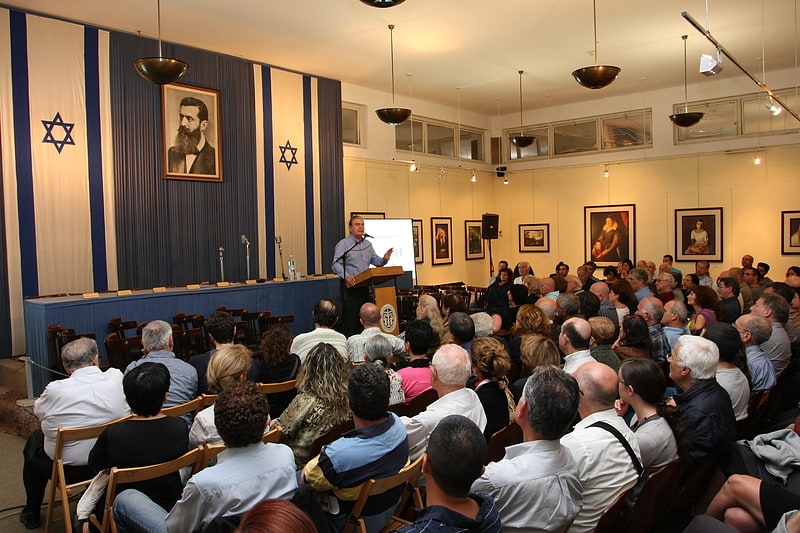
Also known as: בית דיזנגוף
Museum. Independence Hall, originally the Dizengoff House is the site of the signing of Israel's Declaration of Independence. It is located on the historic Rothschild Boulevard in Tel Aviv, Israel. From 1932 to 1971 housing the Tel Aviv Museum of Art, it is currently a museum dedicated to the signing of the Israeli Declaration of Independence and the history of Tel Aviv.[14]
Address: Rothschild Blvd 16, 6688119 Tel Aviv-Yafo
Libyan Synagogue
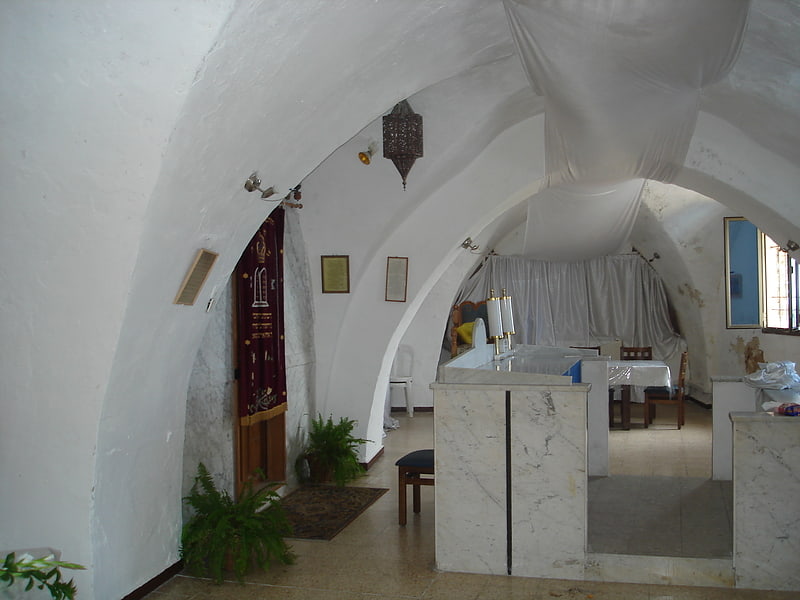
Synagogue in Tel Aviv, Israel. The Libyan synagogue of Jaffa is an Mizrahi Jewish synagogue built inside a former hotel in 1948 by Jewish immigrants from Libya. Located on Rehov Mazal Daggim, the Pisces Street, in the historical part of Jaffa, it is the oldest synagogue in Tel Aviv-Yafo.[15]
Hilton beach

Beach, Park, Outdoor activities, Surf spot
Hassan Bek Mosque

Also known as: מסגד חסן בק
Mosque in Tel Aviv, Israel. The Hassan Bek Mosque, also known as the Hasan Bey Mosque, is one of the most well-known mosques of Jaffa, Tel Aviv, Israel.
The mosque was built in 1916 at the northern boundary of Arab Jaffa and its history is closely bound up with the various stages of the Arab-Jewish conflict.
Its Ottoman-style architecture contrasts with the surrounding contemporary modern high-rises. It is located between Neve Tzedek neighbourhood and the Mediterranean Sea, on the road to Jaffa.[16]
Immanuel Church
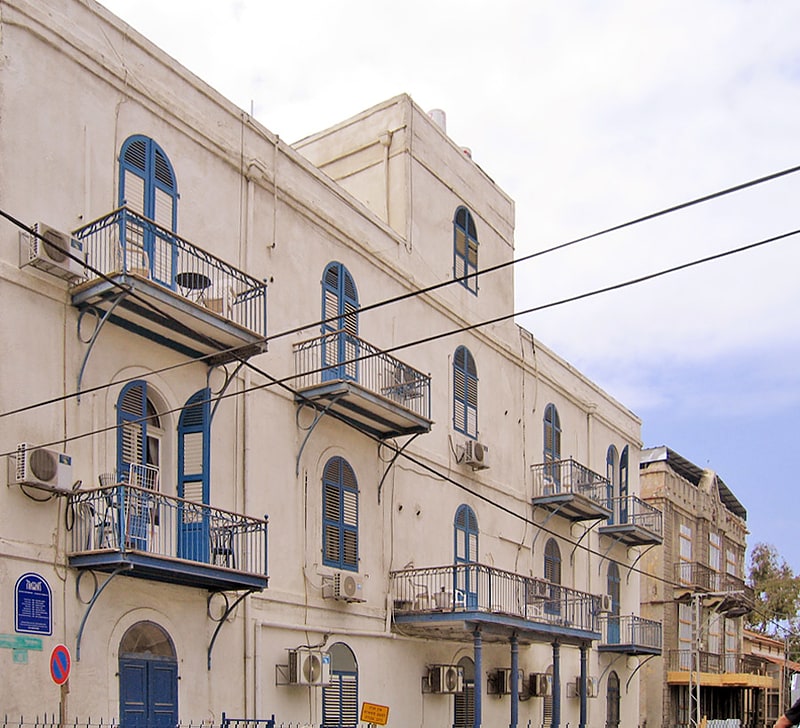
Also known as: כנסיית עמנואל
Lutheran church in Tel Aviv, Israel. Immanuel Church is a Protestant church in the American–German Colony neighbourhood of Tel Aviv in Israel.
The church was built in 1904 for the benefit of the German Evangelical community, which it served until its dissolution at the onset of World War II in 1940. In 1955, the Lutheran World Federation transferred control of the church building to the Norwegian Church Ministry to Israel, and a new congregation started taking shape. Today the church is used by a variety of Protestant denominations as well as by Messianic Jews.[17]
Address: 15 Beer Hoffman St, Tel Aviv
Ramat Gan National Park
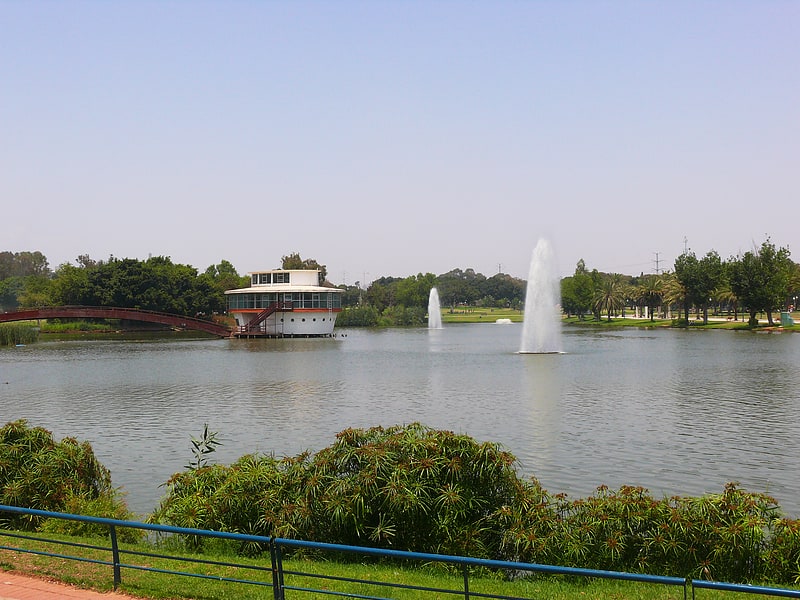
Also known as: הפארק הלאומי
National park in Ramat Gan, Israel. Ramat Gan National Park is a large urban park in the Tel Aviv District city of Ramat Gan, Israel. It is not actually a national park.[18]
Address: Ahad Ha'am 3, Tel Aviv
Azrieli Center
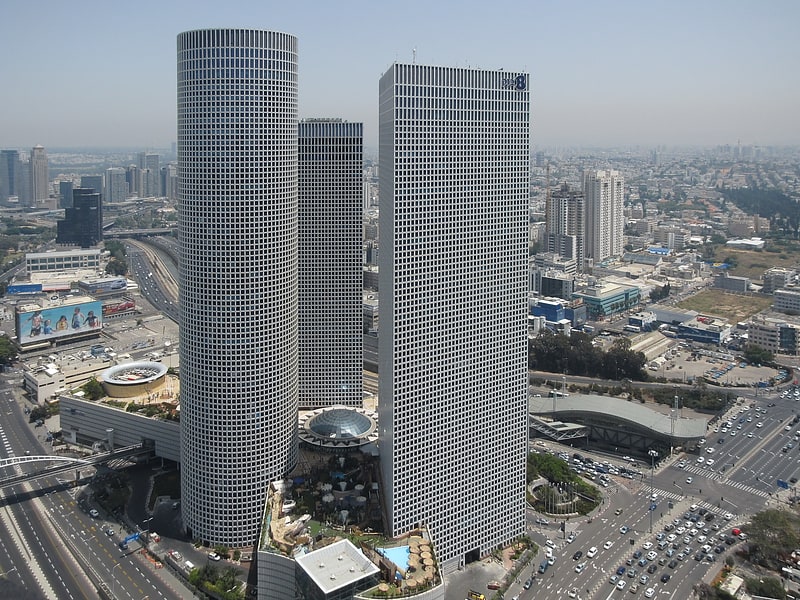
Also known as: מגדלי עזריאלי
Building complex in Tel Aviv, Israel. Azrieli Center is a complex of skyscrapers in Tel Aviv. At the base of the center lies a large shopping mall. The center was originally designed by Israeli-American architect Eli Attia, and after he fell out with the developer of the center David Azrieli, completion of the design was passed on to the Tel Aviv firm of Moore Yaski Sivan Architects.[19]
Address: Derech Petach Tikva St, Tel Aviv
Jaffa Light

Also known as: מגדלור יפו
Lighthouse in Tel Aviv, Israel. Jaffa Light is a lighthouse in Jaffa, Tel Aviv, Israel. It is located on a hilltop above the old Jaffa Port, in the historical part of the city. It operated between 1865 and 1966, although now deactivated it is still used as a daylight navigation aid.[20]
Babylonian Jewry Heritage Center
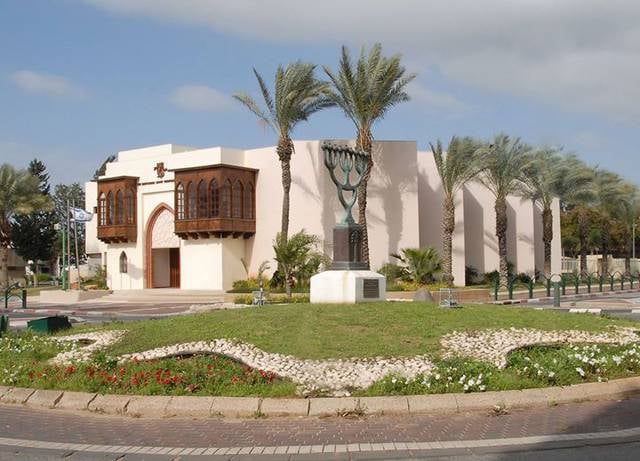
Babylonian Jewry Heritage Center is a museum and research center in Or Yehuda, Israel.[21]
Address: שד' מרדכי בן פורת 83, Tel Aviv
Heichal HaTarbut
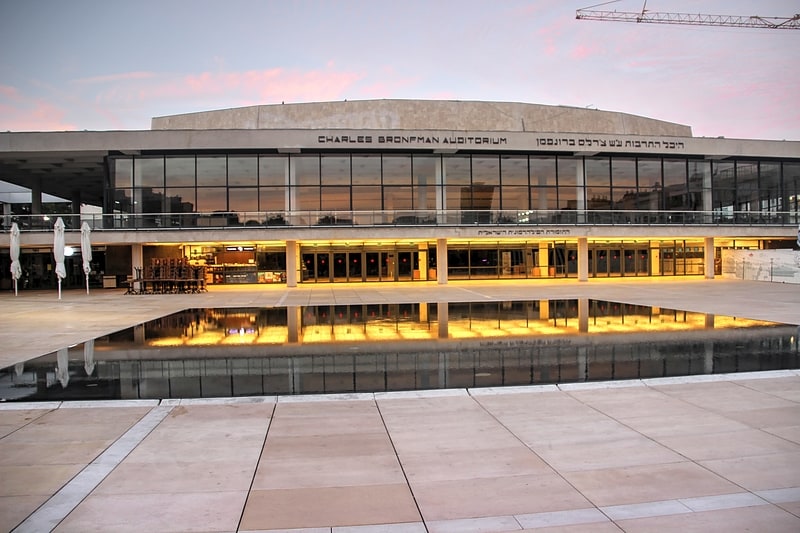
Also known as: היכל התרבות
Concert hall in Tel Aviv, Israel. Heichal HaTarbut, also known in English as the Culture Palace, officially the Charles Bronfman Auditorium, until 2013 the Fredric R. Mann Auditorium, is the largest concert hall in Tel Aviv, Israel, and home to the Israel Philharmonic Orchestra.[22]
Address: Dizengof 11, Tel Aviv
Tell Qasile

Also known as: תל קסילה
Archaeological site in Tel Aviv, Israel. Tell Qasile is an archaeological site in Tel Aviv, Israel. Over 3,000 years old, the site contains the remains of a port city founded by the Philistines in the 12th century BC. It is located near the Yarkon River, on the grounds of the Eretz Israel Museum.[23]
Ramat Gan Stadium
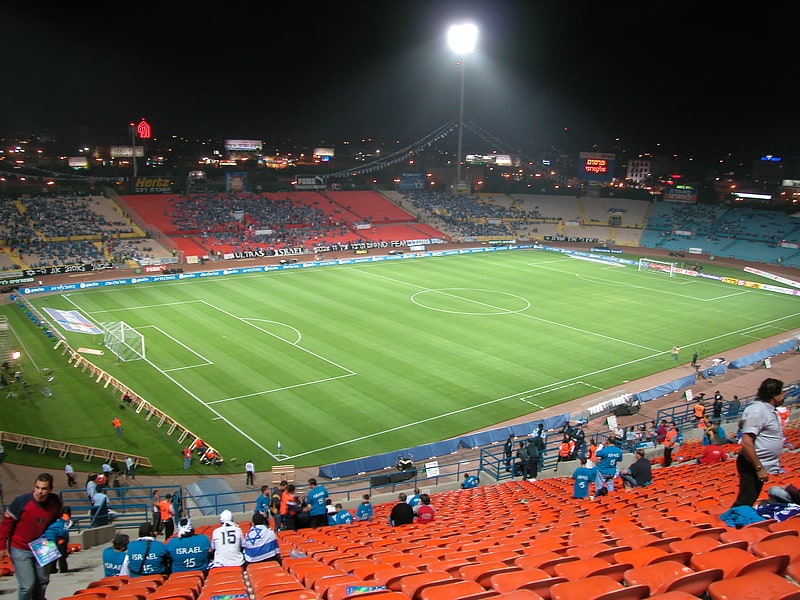
Also known as: אצטדיון רמת גן
Stadium in Ramat Gan, Israel. Ramat Gan Stadium is a football stadium in the Tel Aviv District city of Ramat Gan, Israel. It served as the National stadium of Israel until 2014.[24]
Address: Aba Hilell Street, 52134 Tel Aviv
Gordon beach

Beach
Address: Hayarkon St., Tel Aviv
Siksik Mosque
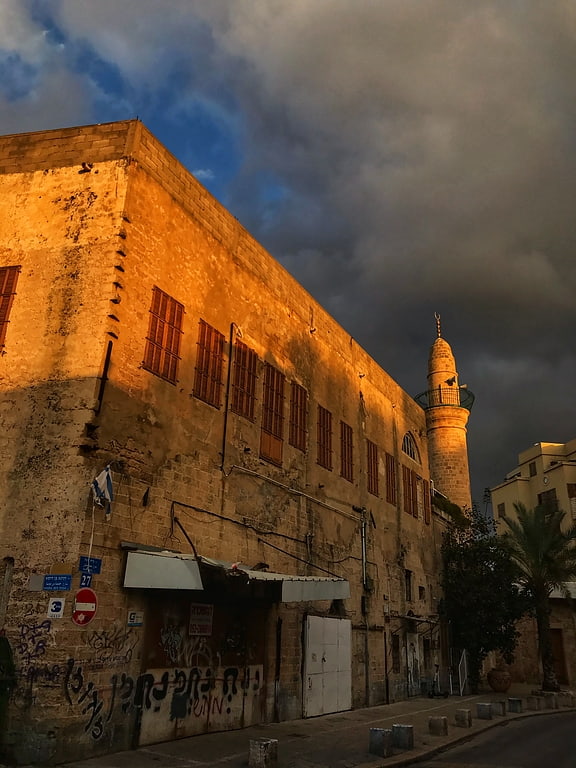
Siksik Mosque is the mosque in Jaffa, Israel.[25]
Menora Mivtachim Arena
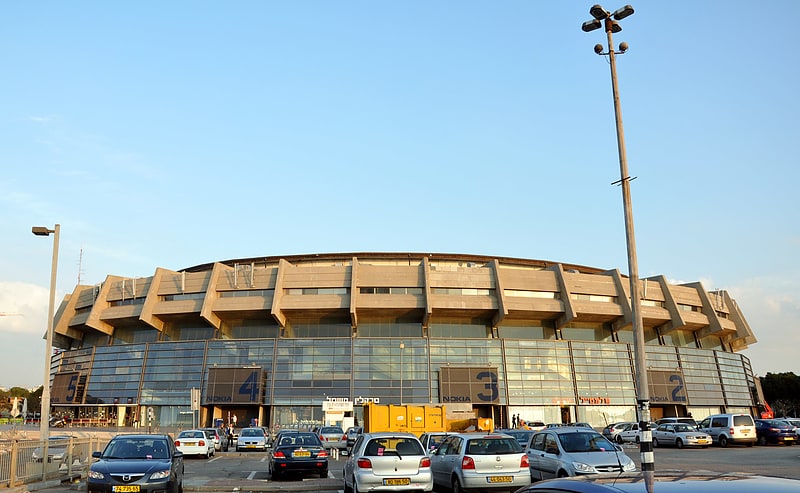
Also known as: היכל מנורה מבטחים
Sports arena in Tel Aviv, Israel. Menora Mivtachim Arena is a large multi-purpose sports indoor arena that is located in southeast Tel Aviv, Israel. The arena is primarily used to host tennis matches, basketball games, and concerts.
It is one of the major sporting facilities in the Greater Tel Aviv Area. The arena is owned by the municipality of Tel Aviv, and is managed by Sports Palaces Ltd. a company also fully owned by the municipality (which also manages Bloomfield Stadium and Drive in Arena). On 1 January 2015, the arena changed its name to Menora Mivtachim Arena.[26]
Address: 51 Yig'al Alon, 6706204 Tel Aviv
Charles Clore Park
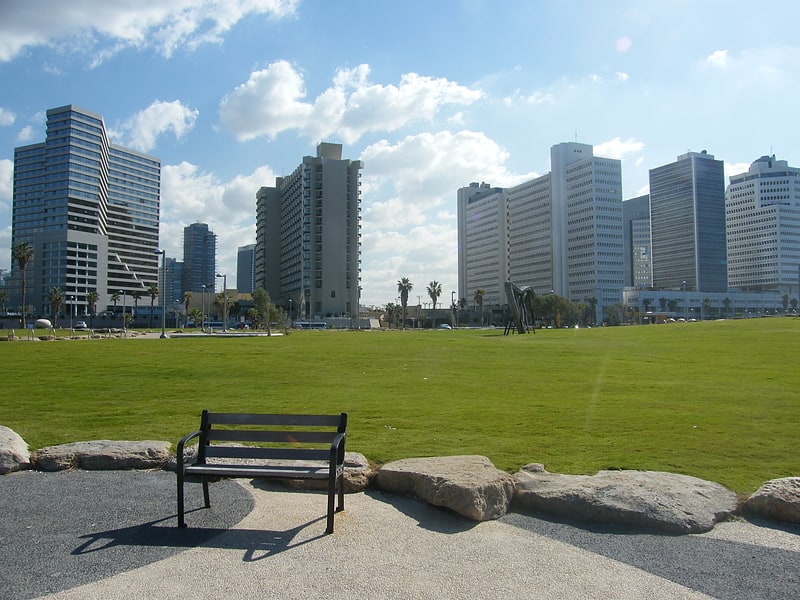
Also known as: פארק צ'ארלס קלור
Park in Tel Aviv, Israel. Charles Clore Park is a beachfront park in southwestern Tel Aviv, Israel. Covering 29.6-acre of public land along the Mediterranean Sea, it's named after Charles Clore, a British financier, property magnate and philanthropist. The Charles Clore Foundation remains an influential grant and funding organization that supports non-profits based in Israel.
The park opened to the public in 1974. In 2007, it underwent a two-year makeover.
It was built on the ruins of Al-Manshiyya, a historic Palestinian neighborhood that was expelled in 1948.[27]
Address: Tel Aviv Promenade, Tel Aviv
Ilana Goor Museum
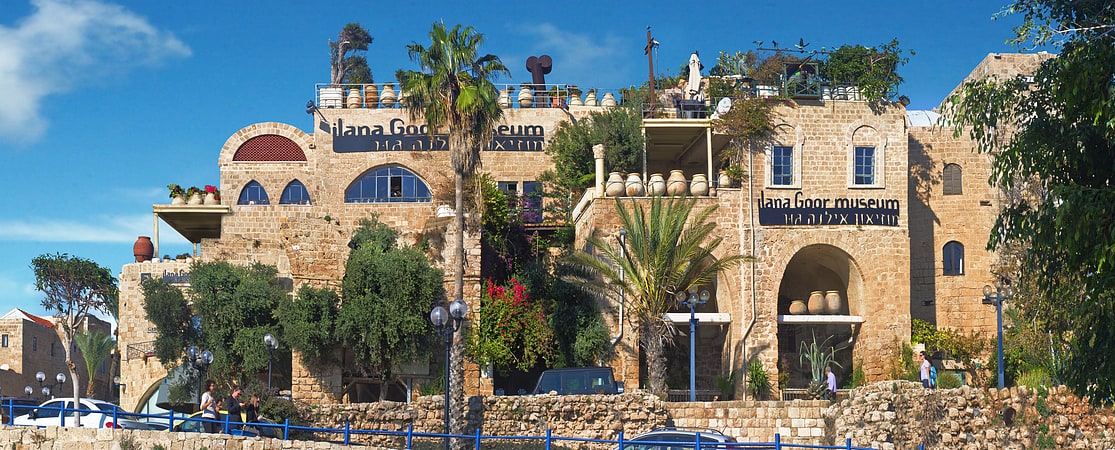
Also known as: מוזיאון אילנה גור
Museum in Tel Aviv, Israel. Ilana Goor Museum or Ilana Goor Residence and Museum is an Israeli museum situated in the historical part of Jaffa, the Mediterranean port town south of Tel Aviv. The museum was founded in 1995 by Ilana Goor, an artist, designer and sculptor. Its eclectic collection has been called an "artistic jungle", but Goor considers it to have been her own "university".[28]
Address: 4 Mazal Dagim Street, 6803623 Jaffa
Rabin Square
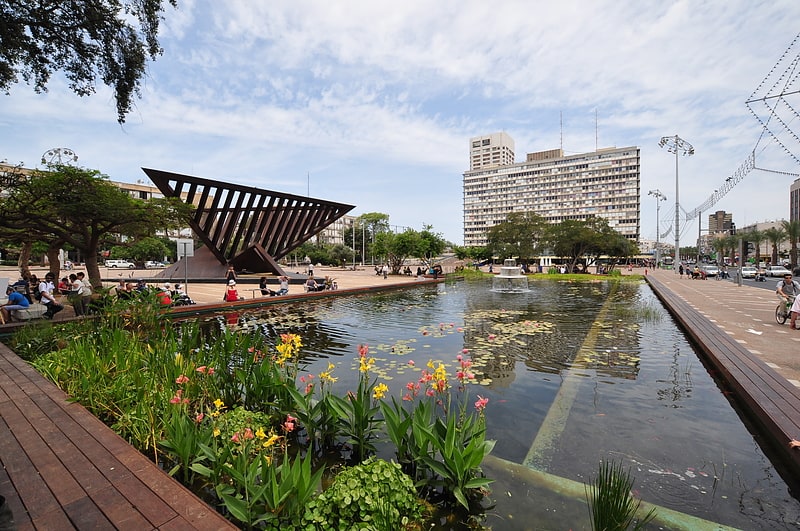
Also known as: כיכר רבין
Park in Tel Aviv, Israel. Rabin Square, formerly Kings of Israel Square, is a main large public city square in the center of Tel Aviv, Israel. Over the years it has been the site of numerous political rallies, parades, and other public events. In 1995 the square was renamed 'Rabin Square' following the assassination of Yitzhak Rabin which occurred there on November 4th 1995.
The square is surrounded by the Tel Aviv City Hall to the north (designed by the architect Menachem Cohen), Ibn Gabirol Street to the east, Malkhey Yisrael (Kings of Israel) Street to the south and Hen Boulevard to the west. It was designed alongside the city hall in 1964 by architects Yaski and Alexandroni.[29]
Address: Even Gvirol St, Tel Aviv
Habima Theatre
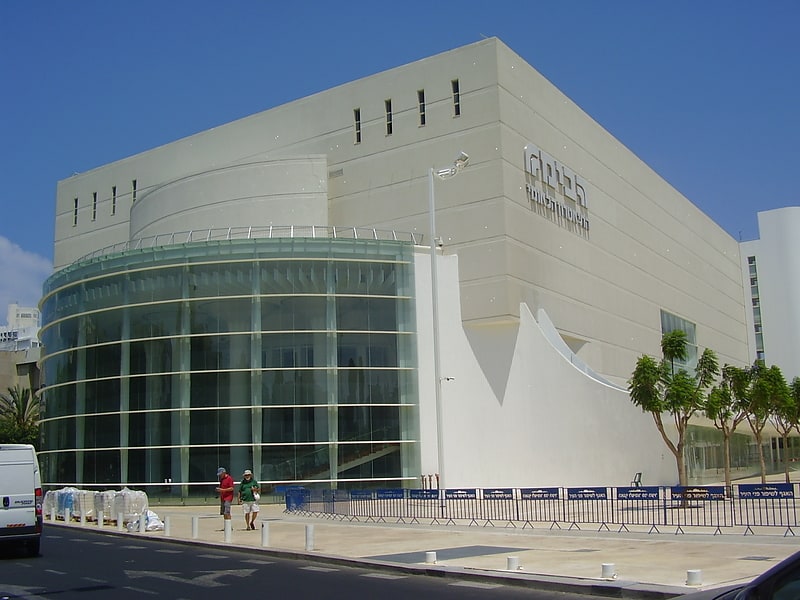
Also known as: הבימה
The Habima Theatre is the national theatre of Israel and one of the first Hebrew language theatres. It is located in Habima Square in the center of Tel Aviv.[30]
Address: Tel Aviv, Habima Square
Nachum Gutman Museum

Also known as: מוזיאון נחום גוטמן לאמנות
Museum in Tel Aviv, Israel. The Nahum Gutman Museum of Art is an art museum located in Neve Tzedek, Tel Aviv, Israel.
The Museum resides in the historical Writers' Home, which was built in 1887 and was one of the first buildings in the Neve Tzedek neighborhood. Between 1907 and 1914 the building served as HaPoel HaTzair Newspaper's hub.
The building's name arose as the place was home to several authors, including Devorah Baron, Yosef Aharonovich, Asher Beresh, Yehuda Burla, and more. During World War I the building stopped serving the purpose of housing authors, and became an ordinary residence until it was abandoned in the 1960s.
In 1992, after the inclusion of the building in the Tel Aviv Building Preservation Program, the building underwent renovation by the architect Roni Zaibert. The museum was opened in May 1998, and the artwork was donated by Nahum Gutman's family, who had wanted to perpetuate his works.
Many items from Nahum Gutman's studio were also donated, and the studio was recreated in one of the museum's rooms. The museum's first director was the curator Yoav Dagon, and today the head curator is Tali Tamir and the museum's director Roni Disenchik.
In September 2009 a new art exhibition division was opened, named after Mori and Ireen Pargament, as well as an events hall for up to 70 people and a new gift store. The exhibitions at the museum bring together Nahum Gutman's works with other artists working in the field of contemporary art, and create dialogues between different eras and different perspectives.
In 2013, board member and lawyer Yitzhak Shviger resigned, claiming that the foundation had become "a stage for Palestinian propaganda".[31]
Address: Shim'on Rokah St, Tel Aviv
St. Anthony's Church
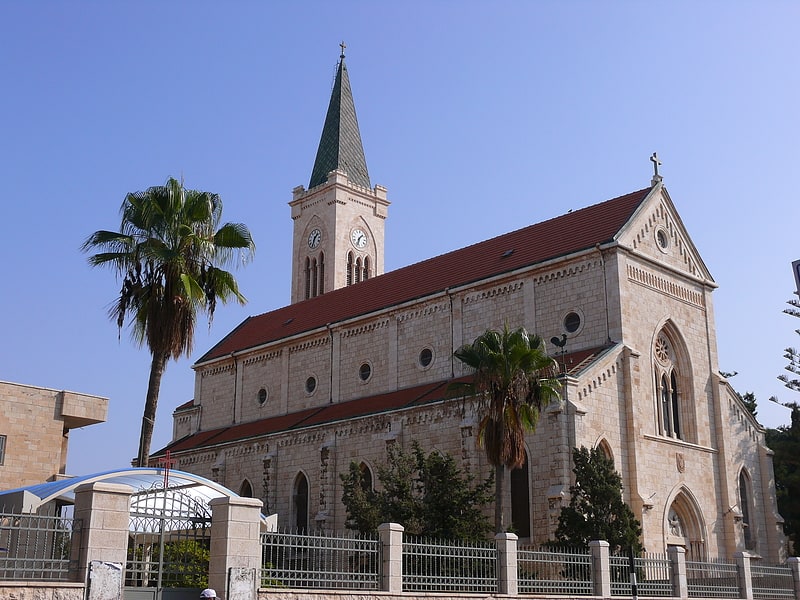
Also known as: כנסיית אנטוניוס הקדוש
Catholic church in Tel Aviv, Israel. The St. Anthony of Padua Church or simply Church of St. Anthony, is a religious building of the Catholic church located on Yefet Street in Jaffa, the southwestern district of the city of Tel Aviv in central Israel.
The temple stands out for its Gothic Revival style and its clock tower. It was named in honor of St. Anthony of Padua a priest of the Franciscan Order, Portuguese preacher and theologian, venerated as a saint and Doctor of the Church by Catholicism.
The structure was completed in 1932. The church is mainly used by foreign workers, mostly from the Philippines. On the north side of the church is the Terra Sancta high school.
Religious services are offered in Arabic and English.[32]
Address: 51 Yefet Street, Tel Aviv
Cymbalista Center
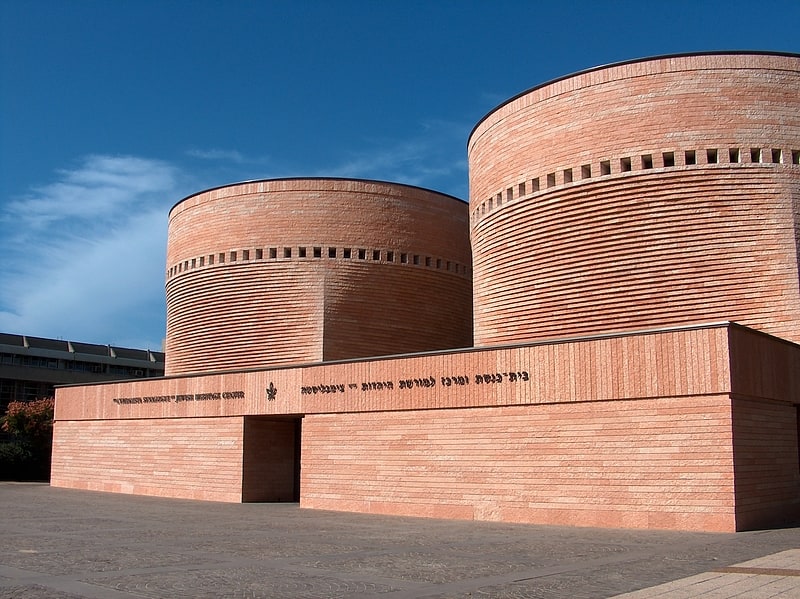
Also known as: בית הכנסת והמרכז למורשת היהדות ע"ש צימבליסטה
Synagogue in Tel Aviv, Israel. The Cymbalista Synagogue and Jewish Heritage Center is a cultural center and the main synagogue of Tel Aviv University. It was designed in 1996 by architect Mario Botta and constructed from 1997 to 1998. The patrons and namesakes were Paulette and Norbert Cymbalista.[33]